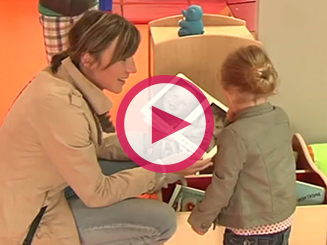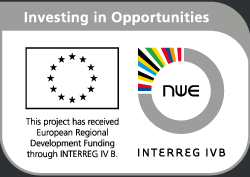With creativity and by working in partnership, there are many ways to bring disused station rooms or entire buildings back to life. In doing so, you’ll make a big difference to the station by:
- creating a welcoming atmosphere
- minimising anti-social behaviour
- improving the passenger experience
- making the station about more than just transport
While it’s important to be mindful of relevant regulations and constraints, the key to reviving station buildings is to use your imagination.

Inspiration

Crediton station tearoom
Devon (UK)
The owner of Crediton station’s tea room has created a sustainable local business that is appreciated and used by many local groups, including the Friends of the Station volunteer group. The tea room has led to reduced vandalism and a safer station environment. Read more.

Rural stations re-imagined
Pays de la Loire (France)
Région Pays de la Loire has helped local organisations to come together to brainstorm new uses for seven disused rural station buildings. Ideas include cycle hire facilities, exhibition space, sales points for local businesses, a library book exchange, and a medical centre. Read more.

Creche at Le Pallet station
Pays de la Loire (France)
The old goods shed at Le Pallet station has been transformed into a creche that caters for more than 20 children. The facility is of course particularly useful for working parents who commute by train – especially since the creche’s opening hours have been tailored to fit with arrival and departure times from the station. Read more.

Rediscover the Region project
Tokyo (Japan)
The East Japan Railway Company has opened stores at urban stations such as Ueno in Tokyo selling local produce and delicacies from rural areas. The stores add interest to the urban stations, as well as raising the profile of outlying areas and promoting travel to these regions.
Following the success of the Ueno store, a second shop was opened in 2014 at Akihabara station, also in Tokyo. Read more.

Work Zone
Northwich (UK)
Stations can play a role in helping people to find employment and develop new skills.
The station building in Northwich, Cheshire, is host to ‘Work Zone’, an award winning café and Community Learning Centre that helps to develop participants’ job hunting and employability skills. The facility combines computers and internet access with a coffee shop. Read more.

Restaurant and information centre
Utrecht (Netherlands)
A vacant space at Driebergen-Zeist station has now been transformed into an information centre and tourism office for the Utrechtse Heuvelrug national park, combined with a modern restaurant.
The new facility uses solar and wind energy, and has a revolving door which generates electricity as customers enter and exit. Read more.
Top 10 tips from community rail specialist Paul Salveson
 ost railways across Europe are dotted with old station buildings that have long since outlived their original purpose. Some have been sold off, often to be used for residential purposes. In other cases, perhaps more imaginatively, they have been converted into shops, community facilities or workspace. The process has – perhaps – gone furthest in the UK, despite many fine buildings having been demolished in the 1970s.
ost railways across Europe are dotted with old station buildings that have long since outlived their original purpose. Some have been sold off, often to be used for residential purposes. In other cases, perhaps more imaginatively, they have been converted into shops, community facilities or workspace. The process has – perhaps – gone furthest in the UK, despite many fine buildings having been demolished in the 1970s.- Is it in a good location where people pass by?
- How well used is the station?
- Is there an active community organisation/s?
- Are there any local ‘unmet needs’ that the building could provide space for?
- Find out who owns the building. It may the railway company, the railway infrastructure body if that is separate, the local council, or a private owner. In general, if it is in railway or local council ownership the job is easier.
- Go and see the relevant owner (Landlord) and get their support. Much depends on the positive response of the individual manager concerned so great tact and diplomacy is required. This needs to be seen as a good idea for them, as well as yourselves!
- If the landlord says the building is falling down or needs a fortune spending on it, maybe you need to look elsewhere. But if it is in decent condition, don’t be deterred by the prospect of some money having to be spent to improve its condition.
Go and talk to people – at this stage, face to face contact is really important. Build trust and interest. It may be that the building is too big for one single group or business to use, so depending on size consider the scope for shared use. Be careful about the sort of group you want to be involved with. If it’s a community group, are they well-established and respected? Have they the resources to be a tenant? If a business, is the use appropriate? (that is, not noisy, dirty, dangerous…). Again, the financial viability of the business is relevant. At this stage, don’t make any commitments!
So, if everything is OK so far, develop a plan for how the building could be used and developed, based on your discussions so far. You need to ask yourselves “what is this building going to be?” – is it a business centre, community facility, arts centre – or maybe a mix of all of these and more?
The cost can run into hundreds of thousands of Euros. We have just seen the completion of a remarkable project in Wakefield (Yorkshire) led by environmental NGO Groundwork which has cost about 7 million euros to make the building ready for use! But that’s unusual. Very often you can get funding for ‘capital’ projects from various sources and help is available to direct you to these sources and assist with grant applications. The bigger issue is making sure you get uses for the building which are financially sustainable and secure for the medium-term at least.
Resources
Links to useful materials around the web:
- New thinking on community-based station development (web article)
A great article, packed with examples of how stations can be transformed by involving communities and businesses, written by UK community rail expert Paul Salveson. - Station facilities on regional lines (workshop presentations)
A series of three workshops was hosted by Cerema (France’s centre for the study of risks, environment, mobility and planning) about services at regional stations. Some of the great examples discussed included fresh vegetable schemes and even employability projects that offer laundry services to passengers. Get links to presentations and summaries from the first, second and third workshops.
Contribute

If you have your own case studies, resources or ideas to contribute to this (or any other) section of the toolkit, please get in touch.
Email our lead partner DCRP or call +44 1752 584777 to speak to our lead partner, the Devon & Cornwall Rail Partnership.
More from this section of the toolkit
Site map
Toolkit homepage | Why get involved? | Contacts for volunteers | How the rail industry works
Improve existing stations
– Early consultation
– Designing with students
– Art and gardening projects
– Community-focused buildings
New uses for station buildings
Creating new stations
More trains, better stations
Attracting more users
Involving citizens and stakeholders







